Are you trying to source truly vegan products for your business, but feel lost in a sea of confusing claims? You worry that hidden animal by-products in dyes or adhesives could compromise your brand’s integrity. Finding a partner who truly understands these details is a major challenge. I want to help you confidently select materials that are genuinely ethical and sustainable.
Vegan-friendly materials are substances that contain no animal products or by-products at any stage of production. This includes the main fiber as well as any glues, dyes, or finishes. Common examples include natural, plant-based fibers like cotton, linen, and hemp, or innovative synthetics like recycled polyester (rPET) and plant-derived leathers. The key is to ensure the entire supply chain is free from animal inputs, making them a cornerstone of ethical and sustainable business.
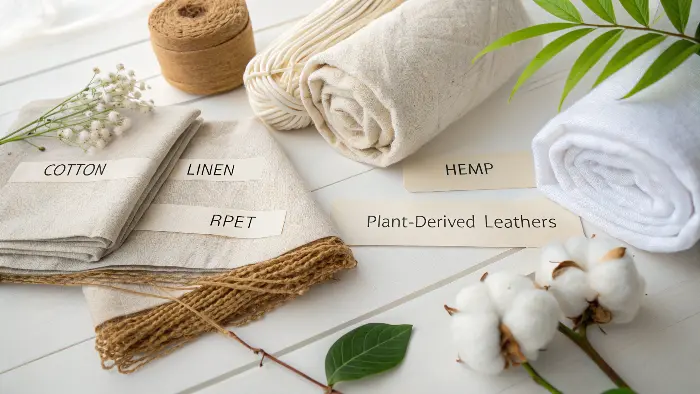
Understanding the basic definition is the first step on this journey. But to make smart, informed decisions for your brand, you need to know exactly which materials fit this category and, just as importantly, which ones to avoid. It’s about looking beyond the obvious like leather and wool. Let’s dive deeper together, so you can source with complete confidence and build a product line your customers trust.
What materials are vegan friendly?
You want to expand your product line with compelling vegan options, but the sheer variety of materials out there can be overwhelming. It’s difficult to know which materials are genuinely plant-based, sustainable, and right for your products. I can provide a clear guide to reliable vegan materials, helping you source innovative and ethical items your customers will love.
Vegan-friendly materials fall into two main groups: natural and synthetic. Natural options include plant-based fibers like organic cotton, linen, hemp, bamboo, cork, and natural rubber. Synthetic choices feature materials like recycled polyester (rPET), Lyocell (Tencel), and innovative vegan "leathers" made from pineapples (Piñatex), mushrooms, or apples. These materials avoid animal exploitation and often have a lower environmental impact, making them excellent choices for conscious brands.
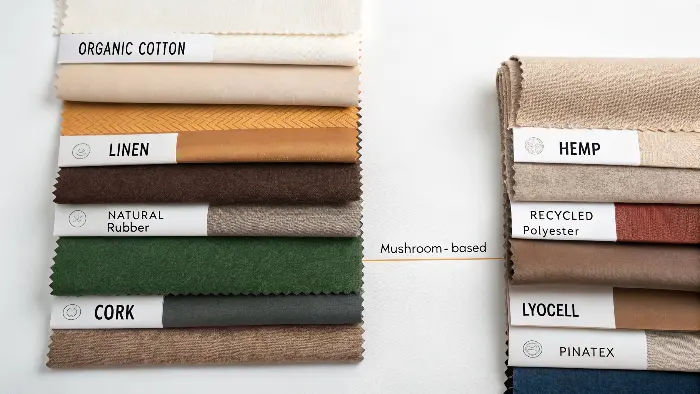
When I work with clients like Jacky, a packaging specialist in Canada, we often break down the options to find the perfect fit. It’s not just about being vegan; it’s about performance, cost, and brand story.
Plant-Powered: Natural Vegan Materials
Natural materials are often the first thing people think of when they hear "eco-friendly." They come from the earth and, when sourced responsibly, return to it. Cotton is the most famous, loved for its softness and breathability, making it ideal for bags or textiles. Linen, made from the flax plant, is incredibly strong and absorbent, a great choice for durable packaging or premium tableware alternatives. Then there’s hemp, a personal favorite of mine. It grows incredibly fast with little water and no pesticides, producing a fiber that is both strong and naturally antimicrobial. Bamboo is another fast-growing grass that can be processed into fibers or used in its solid form for items like reusable cutlery or containers. Finally, cork, harvested from the bark of cork oak trees without harming them, is a fantastic waterproof and lightweight material for all sorts of applications.
Innovation in Synthetics: Man-Made Vegan Options
The world of synthetics is where some of the most exciting vegan innovation is happening. Recycled polyester, or rPET, gives post-consumer plastic bottles a second life, turning waste into a durable, water-resistant fabric. In my work at Ecosourcecn, we also champion materials like Polylactic Acid (PLA), a compostable bioplastic made from plant starches like corn. It’s a fantastic alternative to fossil-fuel-based plastics for disposable items. Beyond that, the rise of plant-based "leathers" is incredible. We’re seeing materials made from pineapple leaf fibers (Piñatex), mushroom mycelium, and even apple peels. These are not just vegan; they are conversation starters that tell a powerful story of sustainability.
Here’s a simple table to compare some of these options:
| Material | Type | Source | Key Sustainability Benefit |
|---|---|---|---|
| Organic Cotton | Natural | Cotton Plant | Grown without synthetic pesticides, uses less water. |
| Hemp | Natural | Hemp Plant | Fast-growing, requires minimal water and no pesticides. |
| Linen | Natural | Flax Plant | Strong, biodegradable, and requires little irrigation. |
| Cork | Natural | Cork Oak Bark | Harvestable without cutting down the tree. |
| rPET | Synthetic | Recycled Plastic Bottles | Diverts plastic waste from landfills and oceans. |
| PLA | Synthetic | Plant Starches (Corn, etc.) | Commercially compostable, made from renewable resources. |
What materials can vegans not wear or use?
A single non-vegan component can unknowingly undermine your product’s ethical promise. Sourcing requires constant vigilance, as animal-derived materials can be hidden in plain sight. You need a clear checklist of what to avoid. Let me outline the most common non-vegan materials so you can protect your brand’s standards and reputation without any guesswork.
Vegans avoid all materials derived directly from animals. This includes the obvious ones like leather, suede, wool, silk, and down feathers. It also covers less common materials like fur, cashmere, mohair, and angora. Critically, it extends to hidden components like certain glues, waxes, and dyes (e.g., cochineal) that can be animal-based. A truly vegan product requires scrutinizing every single component, from the fabric to the thread.
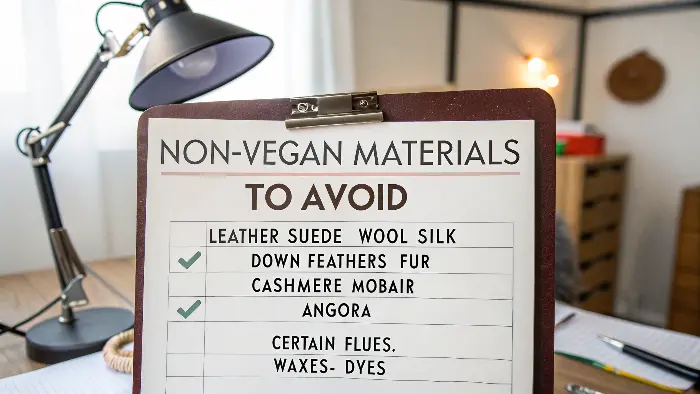
The most difficult conversations I have with new partners are about these hidden ingredients. Everyone knows to avoid leather, but it’s the details in the manufacturing process that can trip you up. A product is only as vegan as its weakest link.
The Obvious Culprits: Primary Animal Materials
These are the materials most people are familiar with. Leather and suede are made from the tanned skin of animals, most commonly cows but also sheep, goats, and pigs. Wool is sheared from sheep, cashmere and mohair from goats, and angora from rabbits. The industries behind these materials are often linked to significant ethical and environmental concerns. Silk is another one to watch; it’s produced by boiling the cocoons of silkworms. Down, prized for insulation, consists of the soft feathers plucked from geese and ducks. For every one of these, there is now an amazing vegan alternative that performs just as well, if not better, without the cruelty.
Hidden in Plain Sight: Secondary Animal-Derived Components
This is where sourcing gets tricky and where true expertise matters. Many adhesives used in footwear, bags, and even packaging are made from collagen, which is derived from animal bones, skin, and connective tissues. Some dyes, particularly deep reds like carmine or cochineal, are made from crushed insects. Even certain finishes and polishes can contain beeswax or shellac, a resin secreted by the female lac bug. Another hidden ingredient is casein, a protein from cow’s milk, which is sometimes used as a binder in paints or adhesives. To ensure a product is 100% vegan, you have to ask your supplier about these details. A trustworthy partner will be able to provide this information transparently.
Here is a quick reference table:
| Non-Vegan Material | Animal Source | Common Vegan Alternative |
|---|---|---|
| Leather/Suede | Cow, Pig, Goat Skin | PU, Mushroom/Apple Leather, Cork |
| Wool/Cashmere | Sheep, Goats | Organic Cotton, Hemp, Tencel, Recycled Fibers |
| Silk | Silkworms | Lyocell, Cupro, Recycled Polyester |
| Animal-based Glue | Animal Collagen | Synthetic, plant-based adhesives |
| Cochineal/Carmine Dye | Crushed Insects | Plant-based or synthetic dyes |
| Beeswax | Bees | Candelilla Wax, Carnauba Wax |
What are 100% vegan materials?
You’ve decided to label a product as "vegan," but are you truly 100% sure? A hidden animal-derived dye or a tiny amount of animal-based glue could lead to a customer backlash and damage your credibility. It’s a risk you can’t afford to take. Let me clarify what "100% vegan" really means and how you can verify it to ensure complete transparency.
A 100% vegan material is one completely free from animal-derived substances at every single stage of its life cycle. This includes raw material sourcing, processing, manufacturing, and finishing. Materials like hemp, linen, and pure rPET are inherently vegan. However, true confirmation of a finished product comes from verifying that all dyes, glues, and other additives are also vegan. Looking for official certifications provides the highest level of assurance.
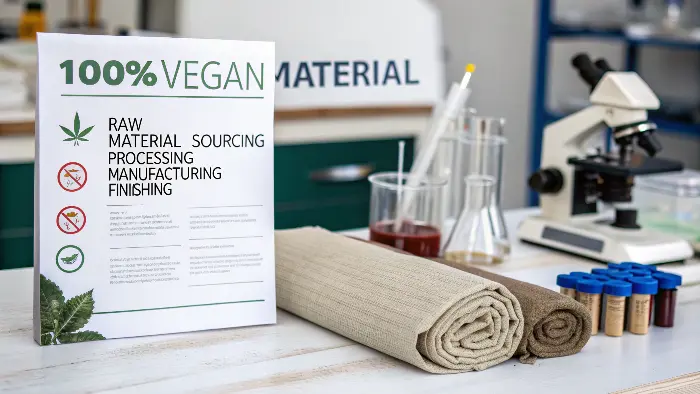
The term "100% vegan" is a promise to your customer. It says that you have done the homework and can stand behind your product without reservation. It’s about building trust, and in the sustainable market, trust is everything.
Beyond the Label: What "100% Vegan" Really Entails
Think of it like baking a vegan cake. The flour, water, and sugar might be vegan on their own. But is the sugar processed with bone char? Does the food coloring contain cochineal? A product is only 100% vegan if every single ingredient—down to the smallest additive—is free from animal origins. For physical products, this means verifying more than just the main fabric or material. You have to check the thread used for stitching, the ink on the label, the adhesive holding it together, and any coatings applied for water resistance or texture. A material that is vegan in its raw state can easily be rendered non-vegan during production if care is not taken. This level of detail is what separates responsible brands from the rest.
The Role of Certifications and Supply Chain Transparency
So, how can you be sure? This is where certifications and transparent partnerships become critical. Independent organizations offer certifications that provide a trusted, third-party guarantee. The most recognized are PETA-Approved Vegan and The Vegan Society’s Vegan Trademark. These programs audit not just the final product but the entire manufacturing process to ensure compliance. When I founded Ecosourcecn, a core principle was supply chain transparency. We work with our clients to provide documentation and full disclosure on every component. A good supplier should be your partner in this, willing and able to give you detailed specifications for all materials used. Never be afraid to ask for this information; it’s your right and your responsibility as a brand committed to vegan principles.
Here are the key steps for verification:
| Step | Action | Why It’s Important |
|---|---|---|
| 1. Verify Base Material | Confirm the primary material is plant-based or synthetic (e.g., cotton, rPET). | This is the foundation of your vegan claim. |
| 2. Request Additive Info | Ask your supplier for a list of all dyes, glues, and finishes used. | This uncovers "hidden" non-vegan components. |
| 3. Look for Certifications | Prioritize suppliers and materials with trusted vegan certifications. | This provides third-party assurance and builds consumer trust. |
| 4. Build Transparent Partnerships | Work with suppliers who value transparency and can provide documentation. | A good partner makes verification easy, not difficult. |
Why is cotton not vegan?
You may have heard a rumor that even a staple like cotton might not be vegan, creating confusion about one of the world’s most common materials. This kind of misinformation can paralyze your sourcing decisions. I want to address this myth head-on. Let’s clear up the confusion so you can confidently use cotton in your vegan product lines.
This is a common misconception: raw cotton is 100% vegan. It is a plant-based fiber harvested from the cotton plant, and no animals are involved in its growth or harvesting. The confusion arises from non-vegan substances that can be added to cotton during manufacturing. For example, some dyes, waxes, or softeners applied to a finished cotton product might be animal-derived. Therefore, while raw cotton is always vegan, the finished item must be verified.
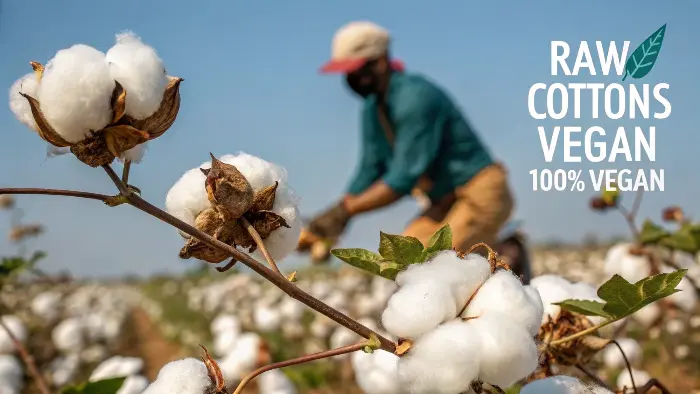
This question comes up more often than you’d think, and it’s a perfect example of why deep product knowledge is so important in this industry. It’s my job to help clients navigate these nuances, so they can speak about their products with authority and confidence.
The Plant Origin: Why Cotton is Fundamentally Vegan
Let’s start with the basics. Cotton is a soft, fluffy fiber that grows in a boll, or protective case, around the seeds of the cotton plants of the genus Gossypium. It is a seed-hair fiber, grown in fields and harvested by machine or by hand. From seed to harvest, there is absolutely no animal involvement. The fiber itself is pure cellulose, a plant-based organic compound. So, at its core, cotton is as vegan as a carrot or a potato. The journey from a simple plant fiber to a non-vegan product happens much later in the supply chain. This distinction is critical for any product developer or sourcing specialist.
Where the Confusion Starts: Non-Vegan Processing Aids
Here is where a perfectly vegan raw material can be compromised. After cotton is spun into yarn and woven into fabric, it undergoes various finishing processes. This is where non-vegan additives can be introduced. A manufacturer might use a red dye made from cochineal insects, a fabric softener containing tallow (animal fat), or a wax coating made from beeswax for a waxed canvas product. Even the label on a cotton t-shirt could be made of leather, or the thread used to stitch a cotton bag could have a beeswax coating. This is why we must shift our thinking from "Is cotton vegan?" to "Is this specific cotton product vegan?" By asking the right questions about dyes, finishes, and accessories, you can ensure your final product remains 100% vegan. Sourcing organic cotton, especially GOTS-certified, often aligns better with vegan ethics as it also ensures higher environmental and social standards.
Here’s a quick checklist to use when sourcing cotton products:
| Component | Question to Ask Supplier | Potential Non-Vegan Element |
|---|---|---|
| Base Fabric | Is this 100% cotton? | (The base fabric itself is vegan) |
| Dyes | Are all dyes used certified vegan? | Cochineal/Carmine (insect-based) |
| Softeners/Finishes | Are all chemical finishes plant-based or synthetic? | Tallow (animal fat) based softeners |
| Coatings | Is any water-resistant coating vegan? | Beeswax |
| Labels/Patches | What material are the labels or patches made from? | Leather patches |
| Thread | Is the sewing thread synthetic or waxed with vegan wax? | Beeswax-coated thread |
Conclusion
Choosing vegan-friendly materials is more than a trend; it’s a core commitment to ethical and sustainable business. From classic cotton and hemp to innovative synthetics, the options are vast. By understanding the entire supply chain and partnering with transparent suppliers, you can confidently build a product line that truly reflects your brand’s values.


